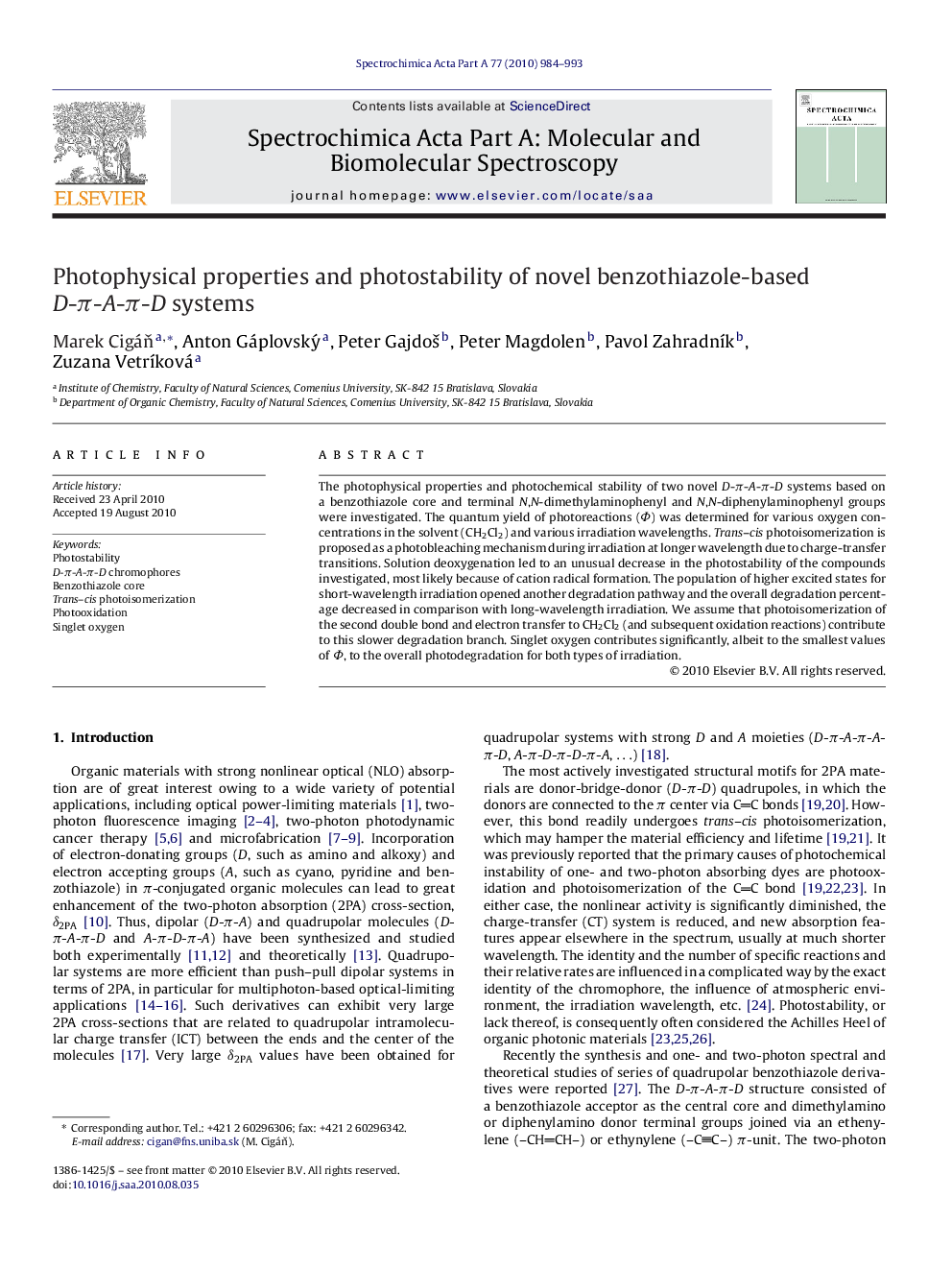| Article ID | Journal | Published Year | Pages | File Type |
|---|---|---|---|---|
| 1233389 | Spectrochimica Acta Part A: Molecular and Biomolecular Spectroscopy | 2010 | 10 Pages |
The photophysical properties and photochemical stability of two novel D-π-A-π-D systems based on a benzothiazole core and terminal N,N-dimethylaminophenyl and N,N-diphenylaminophenyl groups were investigated. The quantum yield of photoreactions (Φ) was determined for various oxygen concentrations in the solvent (CH2Cl2) and various irradiation wavelengths. Trans–cis photoisomerization is proposed as a photobleaching mechanism during irradiation at longer wavelength due to charge-transfer transitions. Solution deoxygenation led to an unusual decrease in the photostability of the compounds investigated, most likely because of cation radical formation. The population of higher excited states for short-wavelength irradiation opened another degradation pathway and the overall degradation percentage decreased in comparison with long-wavelength irradiation. We assume that photoisomerization of the second double bond and electron transfer to CH2Cl2 (and subsequent oxidation reactions) contribute to this slower degradation branch. Singlet oxygen contributes significantly, albeit to the smallest values of Φ, to the overall photodegradation for both types of irradiation.
